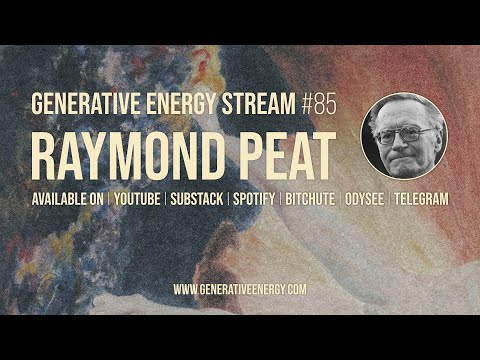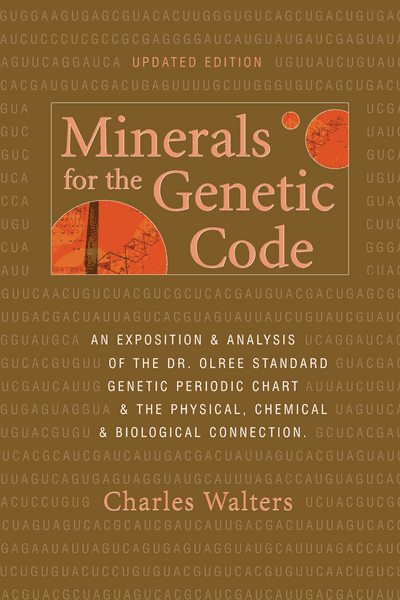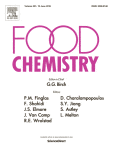electricsematic
Member
- Joined
- May 31, 2021
- Messages
- 29
High copper and high mineral bases are specifically harvested taste-wise and feeling-wise in traditional eating, coupled with high carb. On the other hand, a classical Peating diet as very high carb with fructose, calcium, metabolic enhancers, and less serotonin-estrogen in general, necessitate much more higher mineral base than traditional eating since traditional dieting includes lots of metabolic halting. Such need may necessitate ridiculous amount of copper, and corresponding other traces.
~
Mainstream anti-sugar propaganda advices low sugar fruits like berries. And they may have a fragment of truth in that advice.
Everyone of us is pulled to the bio-energetics with a peculiar type of experience, of sugar if perfectly utilized gives a certain sense of being re-created with a new sensitivity established, with childhood memories, extreme connection to the world, time dilatation, feeling of flow and alignment, and so on.
Yet, many people also note extreme sensitivity to strenuous activity, losing motivation and drive, and pulled into a sedentary life, especially with mostly milk and oranges based diet conducted long time. I can describe the feeling as a burnt out feeling of muscle fibers, certain dryness, muscle and thinking fibers being somewhat incapable of complete movement having both concentric and eccentric parts. Only startings occur, but focus, robustness, closure is lost. The feeling is at its peak if only pure sugar or honey is used, or excessive aspirin, t3 or metabolic substances is used without cooked food or soups, or without shellfish.
I now see that the condition immediately changes and revert back its powerful original version, if one changes oranges with pomegranates, or pineapples, or if one eats a squid meal, but not red meat, nor liver. Experientially, I have come into conclusion that, the feeling must coincide with copper among the traces.
Let me posit the ratio as copper per 100 grams of carbs, either sugar or starch. and for the greens or proteins, I choosed in cronometer copper per 30 grams for protein since using the carb amount will render ridiculous amounts, such as 9 kgs of spinach--but this fact shows greens have very high mineral base and must be utilized. So, looking at the ratios:
 Here the situation is very clear. Some fruits are very high, while oranges are low--I did not include nontropicals, but they are mostly lower than oranges. Vegetables as less-sweet fruits, say zucchini and tomato, support oxidation and have much more copper than the sweet fruits, by providing enough mineral base. The same issue is seen in the sprouted versions of the legumes, since excess starch is used up for the germination, resulting plant is much more higher in copper. Remember Peat esoterics such as oat bran or potato juice, all are reduced in starch content, hence copper ratio becomes higher per carb content. This is also the case with mushrooms, no wonder it is highly popular despite its clear anti-thyroid action in continued use.
Here the situation is very clear. Some fruits are very high, while oranges are low--I did not include nontropicals, but they are mostly lower than oranges. Vegetables as less-sweet fruits, say zucchini and tomato, support oxidation and have much more copper than the sweet fruits, by providing enough mineral base. The same issue is seen in the sprouted versions of the legumes, since excess starch is used up for the germination, resulting plant is much more higher in copper. Remember Peat esoterics such as oat bran or potato juice, all are reduced in starch content, hence copper ratio becomes higher per carb content. This is also the case with mushrooms, no wonder it is highly popular despite its clear anti-thyroid action in continued use.
Another issue, I feel fructose is much more mineral depleting, anti-sugar propaganda would relate it to its being a poison. But here, we know it is because of its metabolic enhancing effect, it uses the body mineral structure, probably mobilizing and displacing copper. High calcium and lactose containing milk induces much less burnt-out feeling of muscles, but it still contributes it. On the other hand, starch may be the least contributing carb since it has a insulinogenic effect, using the centrifugal pathways of endocrine system, hence acting as an anti-metabolic, necessitating less copper. Remember, per 100 grams of carbs potato have 0.7 mg copper while oranges have 0.5, thinking of anti-estrogenic and pro-metabolic effect of the latter, oranges must necessitate much more copper, or else, it can induce body temp drop. And such drop is noted by the many here.
The main context problem and the main contradiction becomes this:
Fruit, especially oranges, and milk as base prometabolic foods, without copper and mineral base, may act as a cooling food, while in correct mineral context will act as a warming food.
This may be the missing puzzle piece. And one must separate two experiences. (1) sugar causing stress hormones melt away and bringing protective inhibition and calmness, sometimes showing itself as sleep. (2) sugar and high oxidative potential coming from calcium and pro-metabolic nutrition causing mineral structure to be depleted and creating certain type of burnt out dry feeling.
But in general, this is striking, certain mineraly, sweet, bright flavor of cooked foods coupled with "comforting" "warming" feeling is caused by copper and high other traces. And this is always seeked and even experienced everyday in traditional eating. While one seeks for special experience and extreme separation of elementality, one can forget the basic experience of human traditional eating. Harvested copper, coming from various plant parts, made into soups. And that is a special type of sweet, not of sugary type, but of a earthy, mineraly, bright. No wonder for a long time, I am somewhat craving constantly specifically that taste.
So, Peat has something when saying at 14:27:
View: https://youtu.be/zZCgpw6_sRA?t=867
And in numerous places, he was emphasizing the importance of taking high minerals, more important than the oxalates or other irritants-plant toxins in general. Or importance of copper for not to accumulate too much iron, or vice versa. Or t3 using copper in order to work. So, in order to maintain eu-thyroid activity, here I am proposing that high sugar oxidative diet must be supported with low-sugar fruits as vegetables, or with other plant parts, cooked, detoxified, sometimes de-fibered by creating concentrated broths, even if and precisely if they may bring some toxicity. Such toxicity must be handled by the high copper, providing gut regenerating power, hence maintaining one for staying outside of extreme elimination diet. If the guts becomes more inflamed than the high copper's benefit, than one will switch into more eliminative classical peating diet, and such transitions may occur even in the course of one day.
This may be a new aproach to the issue of plant anti-metabolics and may explain why plant anti-metabolics are highly selected throughout traditional eating patterns.
It may explain why the user @olive's diet was the perfect example of this, or why cooked tomato broth may be a good staple for a peat diet. Or the threads by Amazoniac or @Twohandsondeck. Or why some feel much better when using some pomegranate instead of all oranges, as far as I remember this was the experience of @CLASH. Or others noting that they replenish something when eating sprouted lentils.
But by all means, one has to experiment, I will probably post the results of both using various plant parts, de-starching, and sprouting.
For a different, longer take:

 electricsematic.wordpress.com
electricsematic.wordpress.com
~
Mainstream anti-sugar propaganda advices low sugar fruits like berries. And they may have a fragment of truth in that advice.
Everyone of us is pulled to the bio-energetics with a peculiar type of experience, of sugar if perfectly utilized gives a certain sense of being re-created with a new sensitivity established, with childhood memories, extreme connection to the world, time dilatation, feeling of flow and alignment, and so on.
Yet, many people also note extreme sensitivity to strenuous activity, losing motivation and drive, and pulled into a sedentary life, especially with mostly milk and oranges based diet conducted long time. I can describe the feeling as a burnt out feeling of muscle fibers, certain dryness, muscle and thinking fibers being somewhat incapable of complete movement having both concentric and eccentric parts. Only startings occur, but focus, robustness, closure is lost. The feeling is at its peak if only pure sugar or honey is used, or excessive aspirin, t3 or metabolic substances is used without cooked food or soups, or without shellfish.
I now see that the condition immediately changes and revert back its powerful original version, if one changes oranges with pomegranates, or pineapples, or if one eats a squid meal, but not red meat, nor liver. Experientially, I have come into conclusion that, the feeling must coincide with copper among the traces.
Let me posit the ratio as copper per 100 grams of carbs, either sugar or starch. and for the greens or proteins, I choosed in cronometer copper per 30 grams for protein since using the carb amount will render ridiculous amounts, such as 9 kgs of spinach--but this fact shows greens have very high mineral base and must be utilized. So, looking at the ratios:
Another issue, I feel fructose is much more mineral depleting, anti-sugar propaganda would relate it to its being a poison. But here, we know it is because of its metabolic enhancing effect, it uses the body mineral structure, probably mobilizing and displacing copper. High calcium and lactose containing milk induces much less burnt-out feeling of muscles, but it still contributes it. On the other hand, starch may be the least contributing carb since it has a insulinogenic effect, using the centrifugal pathways of endocrine system, hence acting as an anti-metabolic, necessitating less copper. Remember, per 100 grams of carbs potato have 0.7 mg copper while oranges have 0.5, thinking of anti-estrogenic and pro-metabolic effect of the latter, oranges must necessitate much more copper, or else, it can induce body temp drop. And such drop is noted by the many here.
The main context problem and the main contradiction becomes this:
Fruit, especially oranges, and milk as base prometabolic foods, without copper and mineral base, may act as a cooling food, while in correct mineral context will act as a warming food.
This may be the missing puzzle piece. And one must separate two experiences. (1) sugar causing stress hormones melt away and bringing protective inhibition and calmness, sometimes showing itself as sleep. (2) sugar and high oxidative potential coming from calcium and pro-metabolic nutrition causing mineral structure to be depleted and creating certain type of burnt out dry feeling.
But in general, this is striking, certain mineraly, sweet, bright flavor of cooked foods coupled with "comforting" "warming" feeling is caused by copper and high other traces. And this is always seeked and even experienced everyday in traditional eating. While one seeks for special experience and extreme separation of elementality, one can forget the basic experience of human traditional eating. Harvested copper, coming from various plant parts, made into soups. And that is a special type of sweet, not of sugary type, but of a earthy, mineraly, bright. No wonder for a long time, I am somewhat craving constantly specifically that taste.
So, Peat has something when saying at 14:27:
View: https://youtu.be/zZCgpw6_sRA?t=867
And in numerous places, he was emphasizing the importance of taking high minerals, more important than the oxalates or other irritants-plant toxins in general. Or importance of copper for not to accumulate too much iron, or vice versa. Or t3 using copper in order to work. So, in order to maintain eu-thyroid activity, here I am proposing that high sugar oxidative diet must be supported with low-sugar fruits as vegetables, or with other plant parts, cooked, detoxified, sometimes de-fibered by creating concentrated broths, even if and precisely if they may bring some toxicity. Such toxicity must be handled by the high copper, providing gut regenerating power, hence maintaining one for staying outside of extreme elimination diet. If the guts becomes more inflamed than the high copper's benefit, than one will switch into more eliminative classical peating diet, and such transitions may occur even in the course of one day.
This may be a new aproach to the issue of plant anti-metabolics and may explain why plant anti-metabolics are highly selected throughout traditional eating patterns.
It may explain why the user @olive's diet was the perfect example of this, or why cooked tomato broth may be a good staple for a peat diet. Or the threads by Amazoniac or @Twohandsondeck. Or why some feel much better when using some pomegranate instead of all oranges, as far as I remember this was the experience of @CLASH. Or others noting that they replenish something when eating sprouted lentils.
But by all means, one has to experiment, I will probably post the results of both using various plant parts, de-starching, and sprouting.
For a different, longer take:

Copper, or origin of plant-based diets.
High copper and high mineral bases are specifically harvested taste-wise and feeling-wise in traditional eating, coupled with high carb. On the other hand, a classical Peating diet as very high car…



